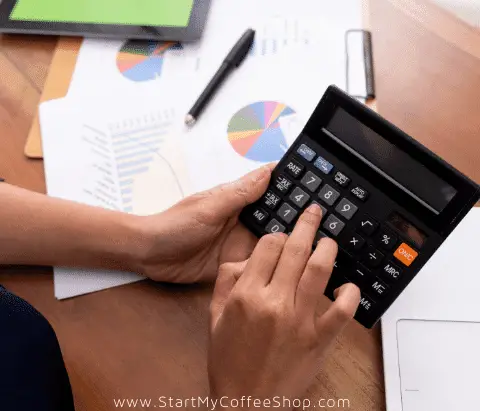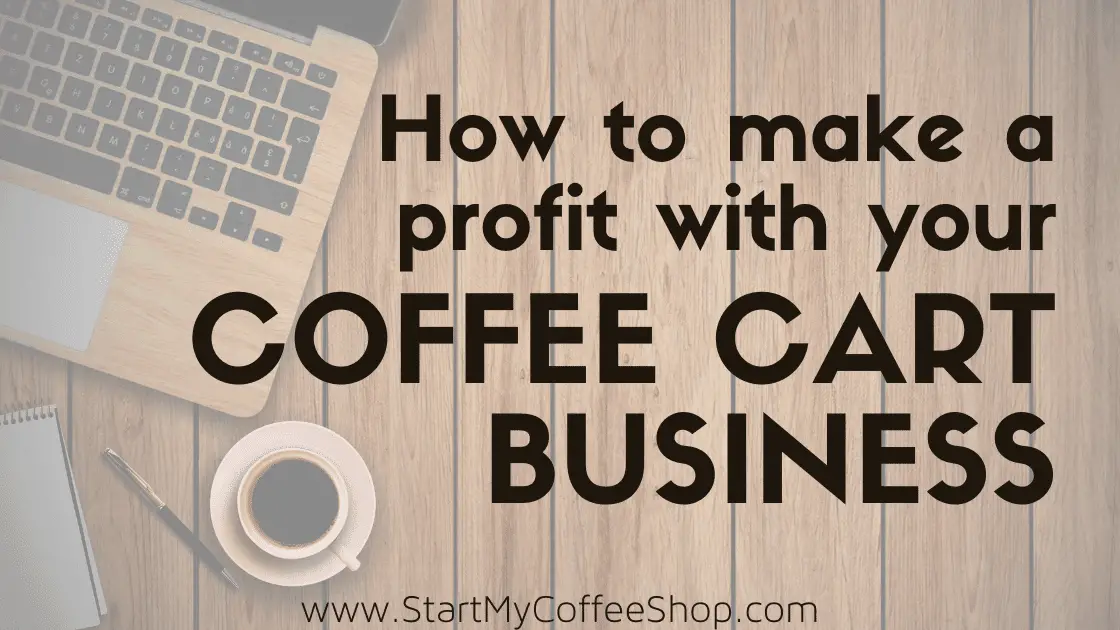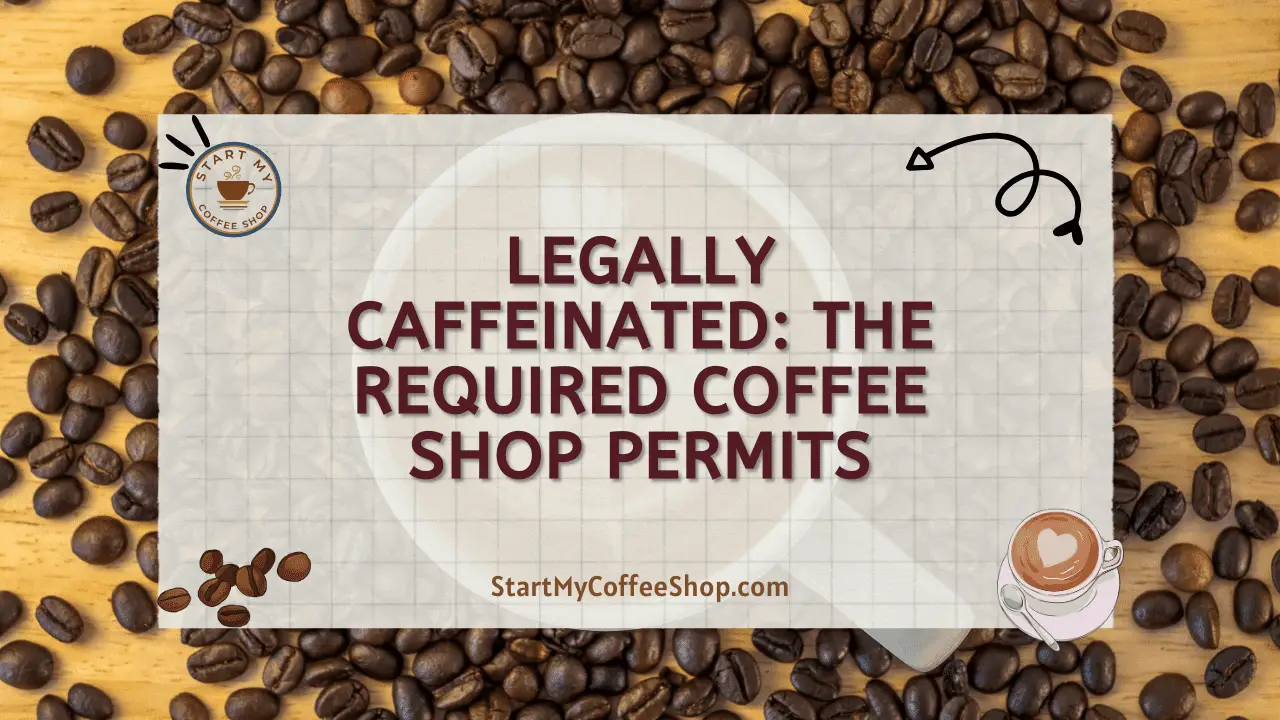A coffee cart business is great to operate if you want to start small with a coffee business. Operating a coffee shop can take more overhead with the building and utility costs, paying for more employee labor, and having to purchase more supplies to accommodate for more customers coming into your shop.
To make a profit with your coffee cart business:
- Calculate the gross profit margin.
- Cut expenses to be more profitable.
- Attend community events, featured menus and have weekly promotions.
Opting to operate a coffee cart business will help you to learn the basics of running the business just on a smaller scale. Plus, you can save money on supplies and building maintenance because you will be operating from a pushcart rather than a building. You will also have limited supplies on hand based on what your cart can carry until you go back to a set location to replenish your stock.
How to Calculate Gross Profit Margin
According to MileIQ, this is the formula you use to calculate gross profit margin:
Total revenue-cost of goods (COGS)=Gross Profit
Gross Profit/Total Revenue= Gross Profit Margin
Gross Profit Margin x 100= Gross Profit Margin Percentage
Gross Profit Margin Formula Dictionary
Here’s a definition list of what’s included in the gross profit margin formula:
Revenue: Total profit once you have sold food and drinks to your customers. Say that you sell each 8-ounce cup of coffee for $1.50 each. You will make $1.50 in revenue per 8-ounce cup of coffee that you sell.
Cost of Goods Sold (COGS): How much it costs you to make all the products that you sold.
Example: An 8-ounce cup of coffee may cost only about $0.50 to make after brewing the coffee beans or grounds, mixing in cream, and giving out sugar packets. If you sell 100 8-ounce cups of coffee in a day, your cost of goods sold just on this type of coffee will be $50.
Gross Profit: The amount that’s left over after subtracting COGS from your revenue.
In this example, you sold 100 cups of coffee at $1.50 each. That’s $150 in revenue. Your cost of goods sold is $50 as explained above. This means that your gross profit on this product that you sold for the day is $100.
Gross Profit Margin Percentage: After you have calculated your gross profit, you find your gross profit margin percentage with the formula “(gross profit/revenue) x 100”.
Say that your total revenue for the month is $40,000 and your gross profit was 25,000. Here’s how to calculate your gross profit margin percentage:
(Gross profit/revenue) x 100= Gross Profit Margin Percentage
($25,000/$40,000) x 100
(0.625) x 100
62.5%=Gross Profit Margin Percentage

What Is a Good Gross Profit Margin Percentage for a Coffee Cart Business?
According to Nobly, since the cost to start and maintain a coffee cart is low, this type of business can easily enjoy a 60% to 80% gross profit margin percentage. It all depends on the cost of goods sold and how popular your coffee cart is to locals.
The two key ways to increase your gross profit margin percentage is by:
- Looking for ways to cut business expenses without skimping on product quality.
- Finding more avenues for accumulating your income.
3 Ways to Cut Your Business Expenses
While coffee carts operate with such low expenses already, you can get them even lower by following these 5 ways to cut your business expenses.
Order Only the Supplies You Need for the Week
Since you have such a small space to store ingredients and prepared food in your coffee cart, only order the supplies you need for the week. This will control your inventory to be sure that you have no spoilage of perishable ingredients such as milk and creamer. Plus, you can keep the fridge at your home or other location of inventory stock clean and ready to be refilled for the next week.
Grab Store Brand Supplies If You Can’t Find a Good Wholesale Deal
If you are having trouble finding a deal on wholesale ingredients you need when it comes to pantry items, do some comparison shopping at stores in your local area. Sometimes you can find store-brand ingredients (milk, sugar, low-calorie sweetener, etcetera) that taste just as good as name brands for a lower cost.
Of course, do not embark on this suggestion when it comes to ground coffee. Stick with the same brands of coffee that you already purchase rather than purchasing store-brand ground coffee so as not to dissatisfy your customers with a thrown-off taste.
Cut Menu Items That Aren’t Selling
If you see a menu item such as a pastry or a type of coffee beverage you are offering is not being purchased as much as your other popular selections, consider cutting them from your menu. You can attempt to promote the unpopular menu items before cutting them completely as a test to see if sales will increase. However, if there is not a substantial change in sales after this promotion test, it’s time to let that menu item go. Get our advice on how to choose items for your menu here.

3 Ways to Accumulate More Profit For Your Coffee Cart Business
Now that we have discussed 3 ways to cut your coffee cart business expenses, let’s touch on the 3 ways you can accumulate more profit for your business.
Set Up Shop at Special Community Events
As a coffee cart business, you are totally mobile and can go pretty much anywhere coffee drinkers will mingle.
Attend seasonal events such as New Year’s Eve block parties, summer festivals, fall festivals, Christmas tree lighting ceremonies.
Look up community events going on in your area by looking in your local newspaper and/or browsing local Facebook events where vendors are allowed to take part and sell their merchandise.
Keep in mind that you may have to pay a fee for being a vendor at a community event, so always check with event coordinators first.
Feature a New Menu Item Every So Often
Keep things fresh and exciting for your regular customers and feature a new menu item every so often. While it may adventurous to try to feature a new menu item every month, start out small and add a new item maybe every 2-3 months as a start. This way, you will have ample time to refine the item to perfection, whether a new coffee beverage, pastry, or breakfast or lunch meal.
Run Weekly Promotions
Change up your promotions each week so your clients always have a way to save on their favorite coffee beverages, pastries, and meals. Maybe one week have $1 off a choice of a 16-ounce coffee beverage to push higher-priced product from your cart. Another week maybe offer a free pastry with the purchase of a 16 or 20-ounce coffee beverage. Get creative with your weekly promotions and see what your clients flock to the most before you try running the same promotion again.

Frequently Asked Questions
Start simple with this suggested menu list and then expand from there as you get used to preparing these items:
Drip coffee (sold in 8, 16, 20, and 24-ounce cups)
Espresso
Iced coffee
Tea
Hot Chocolate
3-5 different types of pastries, such as: Cookies
Cinnamon buns
Strudels
Danishes
Cold sandwiches
Salads
Breakfast sandwiches
You may only be able to start with coffee, tea, hot chocolate, and pre-wrapped pastries to keep it simple depending on your coffee cart’s size and accommodations. Base your menu around what your coffee cart can successfully store in between customer visits.
If you can refrigerate some cold sandwiches and prepped salads, this could increase your profit margin as long as you see that your clients are inquiring about these meal items. If you can microwave pre-made breakfast sandwiches on your coffee cart, this would increase profit as well.
To learn more on how to start your own coffee shop checkout my startup documents here
Please note: This blog post is for educational purposes only and does not constitute legal advice. Please consult a legal expert to address your specific needs.

Hi! I’m Shawn Chun
My adventure in coffee began when I first launched my first coffee shop back in the early 2000s. I had to figure out so many things on my own and to make it worse within 2 years of opening two large corporate coffee chains moved in just blocks away from me!
As I saw smaller and even some larger coffee shops in the neighborhood slowly lose customers to these giant coffee chains and slowly close up shop, I knew that I had to start getting creative…or go out of business.
I (like you may be) knew the coffee industry well. I could make the best latte art around and the foam on my caps was the fluffiest you have ever seen. I even had the best state-of-the-art 2 group digital Nuova Simonelli machine money could buy. But I knew that these things alone would not be enough to lure customers away from the name brand established coffee shops.
Eventually, through lots of trial and error as well as perseverance and creativity I did find a way to not only survive but also thrive in the coffee/espresso industry even while those corporate coffee chains stayed put. During those years I learned to adapt and always faced new challenges. It was not always easy, however, in the end, I was the sole survivor independent coffee shop within a 10-mile radius of my location. Just two corporate coffee chains and I were left after that year. All told the corporate coffee chains took down over 15 small independent coffee shops and kiosks and I was the last one standing and thriving.
Along the years I meet others with the same passion for coffee and I quickly learned that it is not only “how good a barista is” that makes a coffee shop successful, but the business side of coffee as well.
Hence why I started this website you are on now. To provide the tools and resources for up and coming coffee shop owners to gain that vital insight and knowledge on how to start a coffee shop successfully.
Stick around, browse through my helpful blog and resources and enjoy your stay! With lots of LATTE LOVE!
Shawn






